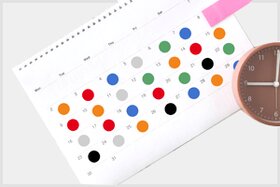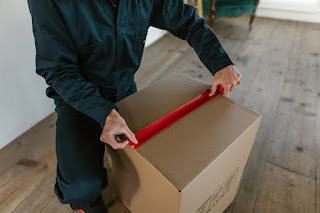Make It or Break It: Know Your Packaging Tape
Everybody
wants to make a good first impression when receiving your product. A damaged package, which
is not held together by anything that looks like dental floss, will not be
appreciated by customers. Worse, poor
packaging can reflect poorly on your business and brand. You need the right tape, no matter if you're shipping or
storing.
All Tape Bite
Here's a quick lesson that should "stick" with
your brain. Tape bites. This happens when tape is applied on corrugated. Over time,
adhesive "flows" into corrugated paper fibers. This is what gives tape its "bite" (or
"stickiness". It is important to
match the correct adhesive with the right backer at the right width in order to
protect your products while they are being transported. Let's now take a look at the tape size considerations and
different tape materials, as well as their best uses.
Size Matters
Packaging tape is available in standard widths and in
different lengths. The tape's
thickness also includes the adhesive and the backing paper. Thickness can be measured in thousandsths of an inch. For example, 1.6 millimeters is equal to.0016", and 3
mil is equal to.003. A typical ziplock bag
weighs in at.002" and 2 mil, respectively. For packages less than 40 pounds, thinner tapes are best.
However, thicker tapes work well for larger packages.
Not All Tape The Same
The pressure-sensitive adhesive tape can be used to
attach two surfaces by using light pressure, without heat or water. The sticky side is made of
an adhesive such as silicone, acrylic, or rubber, which has been heat-treated
to a backing material like paper, plastic, or paper. There are many types of sticky side:
Packing tape This is a widely used tape that uses strong acrylic
glue. It is then backed onto high-tensile materials like polypropylene. Acrylic adhesive is great
for general purposes because it can withstand extreme temperatures, stores
well, resists UV exposure and doesn't deteriorate in humid environments.
Filament Tape - This tape is great for bundling or corrugated
fiberboard boxes. The rubber
adhesive is reinforced with fiberglass filaments and polypropylene to give it
high flexibility.
Masking tape This light-use adhesive is used for painting and
has a paper-backed acrylic backing that is easy to peel.
Hot melt adhesive - This tape's natural rubber adhesive
or synthetic rubber is a great choice for shipping because it can withstand
rough handling. Although Hot
Melt adhesive is less flexible at the beginning, it bonds better over time. Hot Melt adhesives are flexible even at extremely low
temperatures, making them great for applications in cold environments or where
the tape must be stored in a freezer. Corrugated
boxes are often covered with a thin layer dust. Hot Melt adhesive tape works well in this situation.
Marking tape- This is a special type of tape that provides a
general-use acrylic hold.
Photo luminescent tape - Also known as Glow in the dark
tape. It can be
used in Aerospace, Theater, and many other applications. Photo luminescent tape is used to create glow-in-the dark
lines that lead you to an emergency exit on an airplane. Glow in the dark tape can be used to guide people towards
safety if a factory or warehouse goes dark. In the theater, stage managers use glow-in-the dark tape to mark
areas on the stage that are visible even at night.
Gummed tape, also known as water-activated adhesive, is another
method of sealing corrugated surfaces. This tape is extremely strong due to the rigidity of its
kraft paper backing and water activated adhesive. Reinforcing filaments are
also included. This creates a strong bond
that is almost instantaneous. Gum tape can
be imprinted with your logo, just like pressure sensitive tape.



Comments
Post a Comment